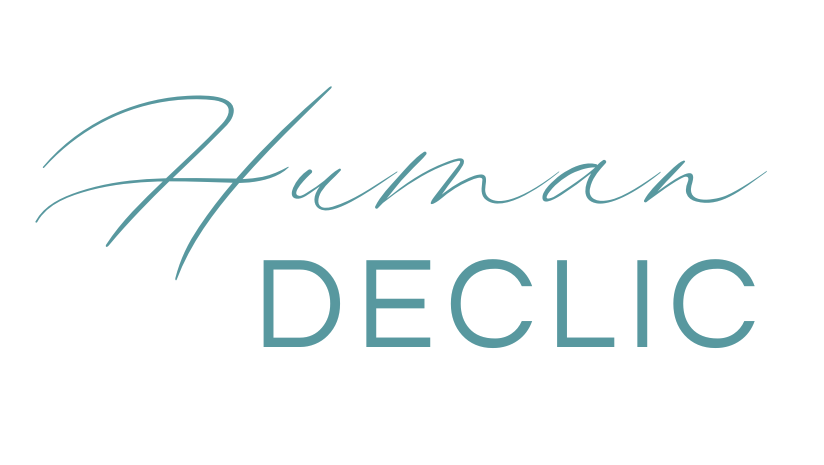The transition from the holiday season back to work can be a real challenge. After a period of relaxation, good meals, and shared moments, we need to get back into our professional rhythm… and that’s not always easy!
Between the feeling of being out of sync, accumulated fatigue, and a possible drop in motivation, we sometimes struggle to restart. Returning to the office or remote work can feel abrupt, with a mental load that hits immediately: emails waiting, meetings to plan, goals to reassess… So many tasks that can make us feel overwhelmed from the very first days.
But a well-managed return can make all the difference. Instead of enduring this transition, we can anticipate it and approach it methodically. By adopting a few simple and effective habits, we can quickly regain our momentum and start the year on the right foot, without unnecessary stress.
So, how can we ensure a smooth transition and restore our productivity? Here are some tips to get back on track! 🚀

Understanding the Challenges of Returning to Work
Getting back to work after the holiday season isn’t just about returning to the office or sitting in front of a screen. Our body and mind must adjust to a sudden change in pace. To better manage this transition, it’s essential to understand the challenges that come with it.
A Disrupted Biological Rhythm
During the holidays, we often change our sleep schedules, enjoy late nights, and adopt a more relaxed pace. The result? When we return, we feel tired and less productive because our biological clock is out of sync.
➡ The effects of a shifted sleep schedule: Staying up late and waking up later during the holidays can disrupt our circadian rhythm. Jumping back into a strict schedule overnight can cause a social jet-lag effect, impacting our focus and energy levels.
➡ More difficult digestion: Holiday indulgences, often high in sugar and fats, can affect our physical well-being. A slower digestion can lead to a feeling of heaviness and fatigue, reducing our work performance.
💡 Tip: To help our body readjust smoothly, it’s recommended to gradually reintroduce a structured sleep routine and opt for a healthier diet from the first days back.
A Mental Load That Hits Immediately
The holidays allow us to put professional obligations on hold. But as soon as we return, we are faced with an avalanche of tasks, which can be a major source of stress.
➡ Emails waiting: The inbox is often overloaded after an absence, making it difficult to know where to start.
➡ Meetings to plan and priorities to reassess: New Year objectives often require a quick refocus, but without proper organization, we can quickly feel overwhelmed.
💡 Tip: Before diving headfirst into urgent matters, take the time to prioritize your tasks. Effectively sorting emails, thoughtful planning, and step-by-step management help re-establish a smooth and productive work rhythm.
🔗 For further insights: Discover how well-structured breaks can help manage this mental load and restore balance: Recharge Your Batteries at Work.
This structured and strategic approach helps us reintegrate smoothly, avoiding stress and burnout. In the next section, we will explore how to organize your return for a seamless and effective transition! 🚀
The Post-Holiday Blues: Regaining Motivation
After a period of relaxation and freedom, returning to work constraints can feel like a sudden rupture. This sense of a “festivities ending” can sometimes lead to a drop in morale and a lack of motivation.
➡ Struggling to get back into action: After stress-free days, it can be challenging to re-establish discipline and work structure.
➡ Lack of enthusiasm and motivation drop: The contrast between the joyful holiday atmosphere and the seriousness of the office can create a sense of fatigue and disengagement.
💡 Tip: To avoid succumbing to post-holiday blues, it’s helpful to set stimulating goals and adopt a positive mindset. Planning engaging projects, rekindling team spirit, and allowing time for mental breaks can help regain momentum progressively.
Recognizing these challenges is the first step to overcoming them. What’s next? Implementing simple yet effective strategies to ensure a smooth and stress-free return.
Structuring Your Return for a Smooth and Effective Transition

A well-managed return does not mean jumping back into the same pace left before the holidays. To avoid stress and overload in the first few days, it is essential to structure the transition wisely. Here are some strategies to ease back into productivity.
✅ Setting Clear and Motivating Goals
Instead of rushing headfirst into a long list of tasks, it’s much more effective to establish clear priorities.
➡ Ease into it with well-defined priorities: Take the time to identify what is truly urgent and what can wait. A strategic selection prevents feeling overwhelmed on the very first day.
➡ Allow time for planning: Before responding to every email or scheduling multiple meetings, dedicate some time to organizing your workflow. This helps you approach the return with clarity and confidence.
💡 Tip: A great way to structure your comeback is to use the “Three Priorities a Day” method: every morning, define three essential tasks to complete before tackling anything else.
☕ Allowing a Landing Phase
It can be tempting to catch up on everything immediately, but this often leads to exhaustion and decreased efficiency. A gradual return is far more beneficial.
➡ Don’t try to do everything in one day: Accepting that not everything will be resolved in 24 hours helps prevent unnecessary stress. Managing priorities should be thoughtful and step-by-step.
➡ Schedule dedicated time slots: Setting aside specific time blocks to sort emails, address urgent matters, and plan meetings helps avoid disorganization and overload.
💡 Tip: To maintain control over your schedule, try time-blocking—allocating specific time slots for each task to prevent distractions and manage unexpected demands effectively.
🧘 Reestablishing a Well-Being Routine
After the holidays, both our body and mind need rebalancing to return to optimal performance.
➡ Regulating sleep by restoring fixed schedules: Going to bed and waking up at consistent times helps recalibrate the body’s internal clock and improves overall energy levels.
➡ Prioritizing a balanced diet: After indulging during the holidays, switching to lighter, nutrient-rich meals can significantly enhance daily energy and focus.
➡ Engaging in physical activity or well-being breaks: Even a short walk or simple stretching exercises can help boost circulation and improve concentration.
💡 Tip: Incorporate small well-being rituals into your workday, like a 5-minute breathing break or a short meditation session—these small habits can make a big difference in stress management and productivity.
🔗 For further insights: Discover how personalized professional coaching can help you structure your return and find an optimal work-life balance: Development and Coaching for Leaders and Managers.
By structuring the transition with a methodical and compassionate approach, it becomes much easier to resume work without stress or pressure. Up next, let’s explore how to maintain this positive momentum by cultivating motivation and workplace well-being! 🚀
💬 (Re)Connecting with Your Team

After a break period, restoring team cohesion is an excellent way to ensure a smooth and motivating return to work.
➡ Sharing holiday experiences for a relaxed and fluid transition: A casual conversation at the start of the day can help ease the stiffness of returning to work and reintroduce a friendly atmosphere.
➡ Organizing a social event to rekindle team spirit: A team breakfast, an informal meeting, or a collaborative workshop can breathe new life into group dynamics and gradually boost collective motivation.
💡 Tip: Team spirit plays a crucial role in motivation. Taking the time to celebrate past successes and discuss upcoming goals provides a positive momentum from the very start of the year.
🚀 Being Kind to Yourself
Productivity doesn’t return overnight, and it’s essential to allow yourself the time needed to regain your usual efficiency.
➡ Accept that productivity won’t return instantly: After a break, the brain needs an adaptation period. Expecting to be 100% efficient right away puts unnecessary pressure on yourself, leading to stress and frustration.
➡ Acknowledge small progress: Instead of focusing on what remains to be done, it’s far more beneficial to celebrate each small achievement. A gradual to-do list approach helps maintain consistent and positive motivation.
➡ Practice self-compassion and avoid self-criticism: Self-discipline is important, but harsh self-judgment can be counterproductive. Speaking kindly to yourself, accepting occasional dips in productivity, and adjusting your pace based on your energy levels are key habits for a gentle and effective transition.
💡 Tip: Establishing professional gratitude rituals—such as noting three daily accomplishments—helps cultivate a positive and constructive attitude toward work.
🔗 For further insights: Discover how personal development strategies can help reinforce motivation and workplace well-being: Personal Development and Professional Balance.
A Stress-Free and Smooth Transition
The post-holiday return shouldn’t be a source of stress or exhaustion. By adopting a progressive approach, structuring the transition, and incorporating well-being habits, it’s entirely possible to regain efficiency without pressure.
By taking care to readjust your rhythm, nurture connections with your team, and practice self-compassion, this transition can become an opportunity for renewal rather than a constraint.
At Human Déclic, we support companies and teams in navigating these transition periods and fostering long-term workplace well-being.
🔗 Looking for guidance to ensure a smooth and motivating return? Learn more about our approach here:
Work with Christine Martin
📅 Book a personalized consultation with us:
Schedule a Meeting with Human DéclicAnd you? What are your best tips for a stress-free return after the holidays?




